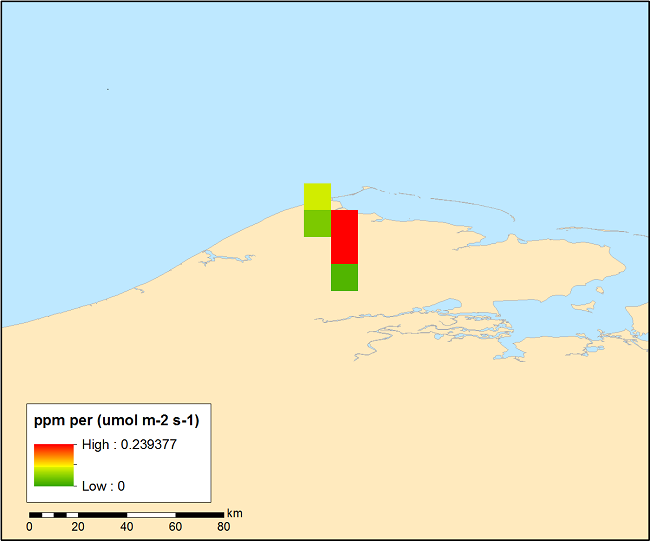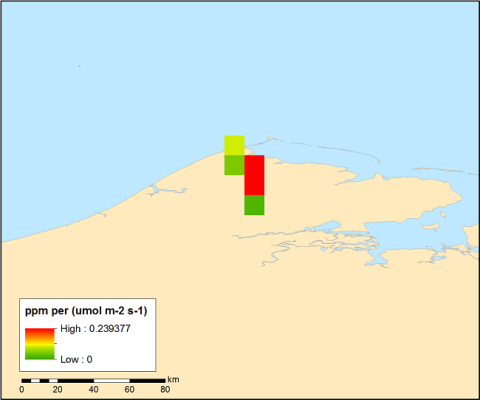In two new datasets from the ABoVE campaign, the NOAA Barrow Alaska Observatory was treated as receptor in the WRF-STILT model in order to simulate the land surface influence on observed atmospheric constituents. The measurements are crucial for understanding changes in Arctic carbon cycling and are part of a retrospective analysis to link changes in atmospheric composition at Arctic receptor sites with shifts in ecosystem structure and function.
Pre-ABoVE: Gridded Footprints from WRF-STILT Model, Barrow, Alaska, 1982-2011
Pre-ABoVE: Particle Trajectories for WRF-STILT Model, Barrow, AK, 1982-2011
These datasets provide Stochastic Time-Inverted Lagrangian Transport (STILT) model outputs for receptors located at the NOAA Barrow Alaska Observatory for 12 selected years across the 30-year, 1982 to 2011, study timeframe. Meteorological fields from version 3.5.1 of the Weather Research and Forecasting (WRF) model are used to drive STILT. STILT applies a Lagrangian particle dispersion model backwards in time from a measurement location (the "receptor" location), to create the adjoint of the transport model in the form of a "footprint" field. The footprint, with units of mixing ratio (ppm --- CO2; ppb --- CH4) per (umol m-2 s-1 --- CO2; nmol m-2 s-1 --- CH4), quantifies the influence of upwind surface fluxes on concentrations measured at the receptor and is computed by counting the number of particles in a surface-influenced volume and the time spent in that volume. The simulation results included in this dataset are crucial for understanding changes in Arctic carbon cycling and are part of a retrospective analysis to link changes in atmospheric composition at Arctic receptor sites with shifts in ecosystem structure and function.
Note that "particle" dataset contains both the particle trajectories and the gridded footprint data. The "footprint" data are also provided as a stand-alone dataset, for ease of use.
Data Citations:
Henderson, J. 2018. Pre-ABoVE: Particle Trajectories for WRF-STILT Model, Barrow, AK, 1982-2011. ORNL DAAC, Oak Ridge, Tennessee, USA. https://doi.org/10.3334/ORNLDAAC/1571
Henderson, J. 2018. Pre-ABoVE: Gridded Footprints from WRF-STILT Model, Barrow, Alaska, 1982-2011. ORNL DAAC, Oak Ridge, Tennessee, USA. https://doi.org/10.3334/ORNLDAAC/1544
Data center: ORNL DAAC
Sponsor: NASA EOSDIS
Image Media

Image Media
Caption
Plot of the 0.1 degree gridded STILT footprint model output for August 15, 1982 near the receptor location at Barrow, Alaska. This variable provides 24 hours of surface influence representing the response of the receptor to a unit surface emission (ppm/umol m-2 s-1) of CO2 in each grid cell within a small region close to the measurement location. (From the data file foot1982x08x15x06x00x71.3230Nx156.6114Wx00016.nc)

